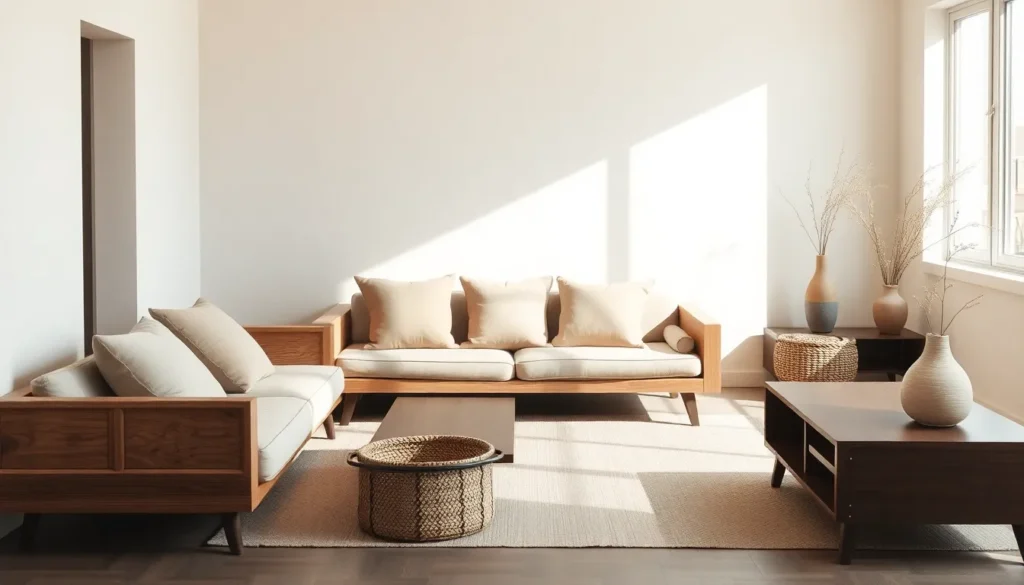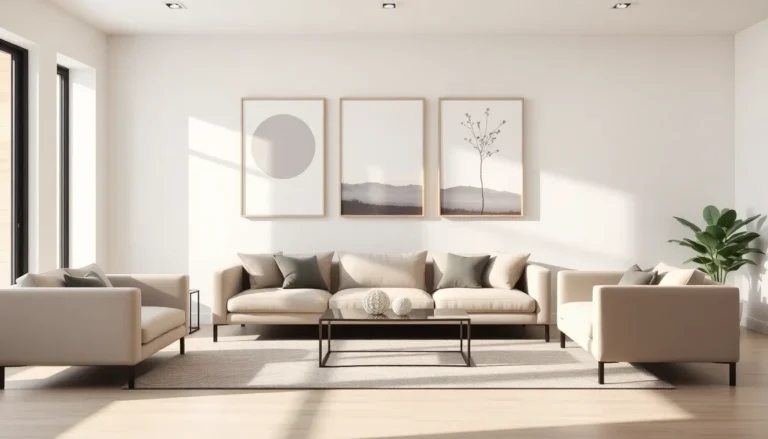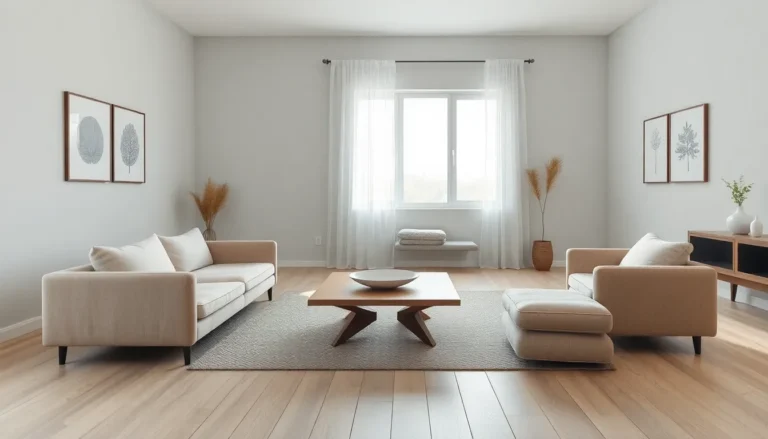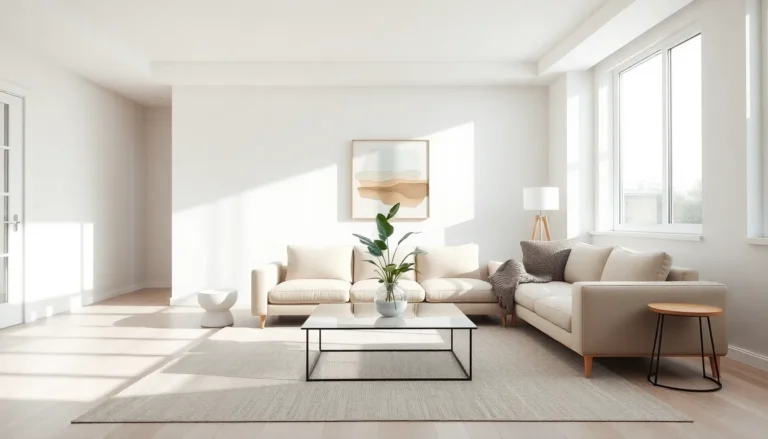Have you ever walked into a room so peaceful that it felt like a mini-vacation? The Japandi living room is just that, a harmonious blend of Japanese aesthetics and Scandinavian minimalism. Imagine clear spaces, warm woods, and a soothing color palette. It’s like stepping into a Zen garden, minus the sand raking. In a world full of chaos, embracing a Japandi-inspired space offers a chance to declutter both your home and mind. Let’s jump into how a minimalist lifestyle can elevate your living room to serene perfection.
Table of Contents
ToggleUnderstanding Minimalist Lifestyle
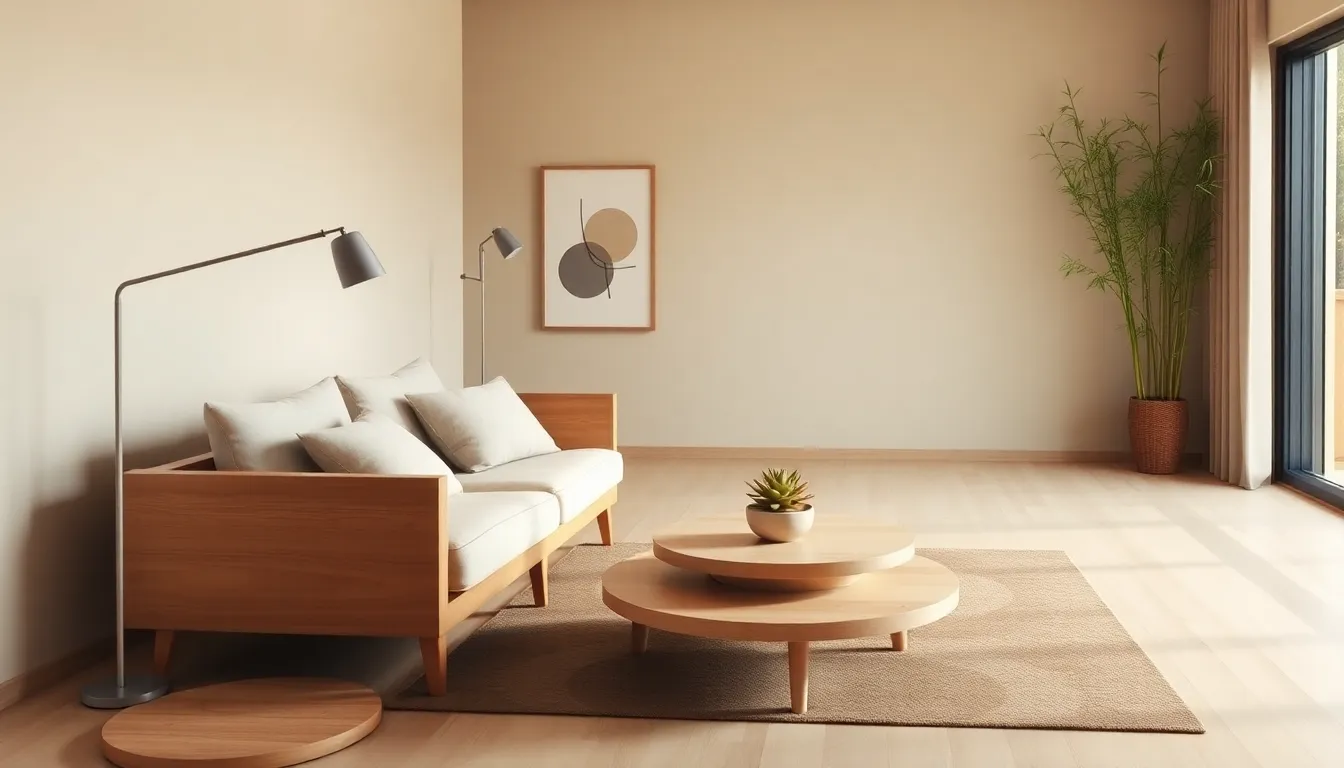
Minimalism is more than just cleaning out your closet: it’s about a mindset shift. Many people equate minimalism with stark white walls and an empty void. In truth, it’s about intentional living, focusing on what truly matters.
A minimalist lifestyle encourages individuals to cut through the noise of consumer culture, fostering a dedicated space that reflects personal values. This outlook leads to a living area that not only looks inviting but also nurtures peace of mind. It’s about quality over quantity, cherishing items that bring joy while discarding those that serve no purpose other than to clutter.
In essence, the minimalist approach invites a life less impacted by material possessions, more time spent on experiences rather than things.
The Essence of Japandi Design
At its core, Japandi design combines the best of both worlds: the effortless simplicity of Scandinavian style and the elegance of Japanese tradition. This fusion paves the way for a living room that feels both tranquil and warm.
Japandi doesn’t ignore the comforts of home. It ingeniously incorporates Japanese values of craftsmanship with the functionality that defined Scandinavian design. Think muted tones, tactile textures, and an emphasis on natural materials that provide warmth without overwhelming sensibilities. Rather than a collision of styles, it creates a seamless blend that feels refreshingly cohesive.
Homes with this aesthetic promote mindfulness. Each piece selected serves a purpose, carrying its own weight in both function and style. The fusion of simplicity and culture means viewers won’t just observe: they’ll feel an emotional connection to the elements of the space.
Key Elements of a Japandi Living Room
Selecting the Right Color Palette
The right colors set the tone for any living room, especially in a Japandi space. Neutral palettes dominated by whites, beiges, and earthy tones create a backdrop that speaks to simplicity and calmness. To add depth, consider soft hues inspired by nature.
Dark wood can contrast beautifully against lighter tones, creating an inviting atmosphere almost reminiscent of a serene desert landscape. Adding a splash of color with muted greens or muted pastels can evoke a sense of tranquility in the room without overwhelming its core aesthetic.
Furniture Choices for Minimalism
When selecting furniture for a Japandi living room, opt for clean lines with a touch of warmth. Low-profile sofas and chairs made from natural materials like rattan or wood resonate well here. Instead of filling the space with bulky items, choose thoughtfully designed pieces that invite comfort.
Multi-functional furniture serves as a wise addition, as it preserves practicality while upholding the minimalist ethos. A sleek coffee table with hidden storage could serve dual roles, functionality meets elegance.
Decor and Accessories
Incorporate accessories sparingly to ensure they enhance rather than overcrowd the space. Think about bringing in a few key pieces that resonate with the theme, such as hand-woven baskets, ceramic vases, and dried plants that breathe life into the atmosphere.
Lighting should also be organic. Consider soft, warm lamps that can create a cozy ambiance during the evenings. Elements like shoji screens or simple wall art with natural scenes can add to the aesthetic while keeping decor minimal yet expressive.
Creating a Functional Layout
Layout matters greatly when it comes to a Japandi living room. Consider flow: how people will move through the space impacts the overall feel drastically. Avoid crammed spaces and ensure that each piece has breathing room.
Furniture should align with how the room will be used, whether for lounging, working, or entertaining. Aim to create distinct zones for different activities without breaking the overall unity of the room. For example, a reading nook with a chic floor lamp could exist side by side with a spacious couch area, both complementing one another while serving their purposes.
Simplifying pathways and avoiding obstructions can highlight the beauty of each carefully chosen piece. This approach naturally encourages a feeling of openness, embodying the essence of a minimalist lifestyle.
Sustainable Practices in Japandi Living Rooms
Sustainability forms a key pillar in both Japanese and Scandinavian cultures, aligning perfectly with the minimalist lifestyle. Emphasizing eco-friendly materials not only benefits the planet but also promotes health and well-being in home spaces.
Opt for furniture crafted from reclaimed wood or sustainably sourced materials, these choices reduce environmental impact and often come with a story that resonates with the space’s overall ethos. Fabrics like organic cotton, linen, or wool can enhance comfort while keeping the aesthetic grounded in nature.
Repurposing older items or incorporating vintage pieces can also breathe life into a Japandi living room. Not only do they possess unique character, but they contribute to a lifestyle that values durability and extends the lifecycle of products, shifting away from a culture of disposability.

